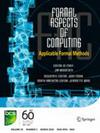安全实用形式化方法综述
IF 1.4
4区 计算机科学
Q3 COMPUTER SCIENCE, SOFTWARE ENGINEERING
引用次数: 15
摘要
在当今世界,关键基础设施通常由计算系统控制。这为网络攻击带来了新的风险,这可能会危及这些系统的安全性并破坏其功能。因此,有必要建立这样的系统,为抵御网络攻击提供强有力的弹性保证。实现这种保证级别的一种方法是使用正式验证,它提供了系统符合所需网络安全属性的证明。本文回顾了形式化方法(FM)在网络安全和安全关键系统方面的使用。我们将FM分为三个主要类:定理证明、模型检查和轻量级FM。为了比较FM的不同用法,我们定义了一组通用术语。我们进一步根据FM所应用的计算系统类型来划分分类。介绍、讨论、比较和总结每个类和类别的解决方案。我们描述了网络安全领域FM的历史亮点和发展,并对其进行了最新的回顾。本文从FM从业者和研究人员的角度对每个类别和类别的趋势进行了评论。这是通过考虑所有类型的FM、几种类型的安全性和安全性关键型系统,并相应地构建分类法来实现的。因此,本文全面概述了FM和安全关键型系统的系统设计人员可用的技术,简化了为任务选择正确工具的过程。文章最后总结了对审查的讨论,重点关注该领域的最佳实践、挑战、总体未来趋势和研究方向。本文章由计算机程序翻译,如有差异,请以英文原文为准。
A Survey of Practical Formal Methods for Security
In today’s world, critical infrastructure is often controlled by computing systems. This introduces new risks for cyber attacks, which can compromise the security and disrupt the functionality of these systems. It is therefore necessary to build such systems with strong guarantees of resiliency against cyber attacks. One way to achieve this level of assurance is using formal verification, which provides proofs of system compliance with desired cyber security properties. The use of Formal Methods (FM) in aspects of cyber security and safety-critical systems are reviewed in this article. We split FM into the three main classes: theorem proving, model checking, and lightweight FM. To allow the different uses of FM to be compared, we define a common set of terms. We further develop categories based on the type of computing system FM are applied in. Solutions in each class and category are presented, discussed, compared, and summarised. We describe historical highlights and developments and present a state-of-the-art review in the area of FM in cyber security. This review is presented from the point of view of FM practitioners and researchers, commenting on the trends in each of the classes and categories. This is achieved by considering all types of FM, several types of security and safety-critical systems, and by structuring the taxonomy accordingly. The article hence provides a comprehensive overview of FM and techniques available to system designers of security-critical systems, simplifying the process of choosing the right tool for the task. The article concludes by summarising the discussion of the review, focusing on best practices, challenges, general future trends, and directions of research within this field.
求助全文
通过发布文献求助,成功后即可免费获取论文全文。
去求助
来源期刊

Formal Aspects of Computing
工程技术-计算机:软件工程
CiteScore
3.30
自引率
0.00%
发文量
17
审稿时长
>12 weeks
期刊介绍:
This journal aims to publish contributions at the junction of theory and practice. The objective is to disseminate applicable research. Thus new theoretical contributions are welcome where they are motivated by potential application; applications of existing formalisms are of interest if they show something novel about the approach or application.
In particular, the scope of Formal Aspects of Computing includes:
well-founded notations for the description of systems;
verifiable design methods;
elucidation of fundamental computational concepts;
approaches to fault-tolerant design;
theorem-proving support;
state-exploration tools;
formal underpinning of widely used notations and methods;
formal approaches to requirements analysis.
 求助内容:
求助内容: 应助结果提醒方式:
应助结果提醒方式:


